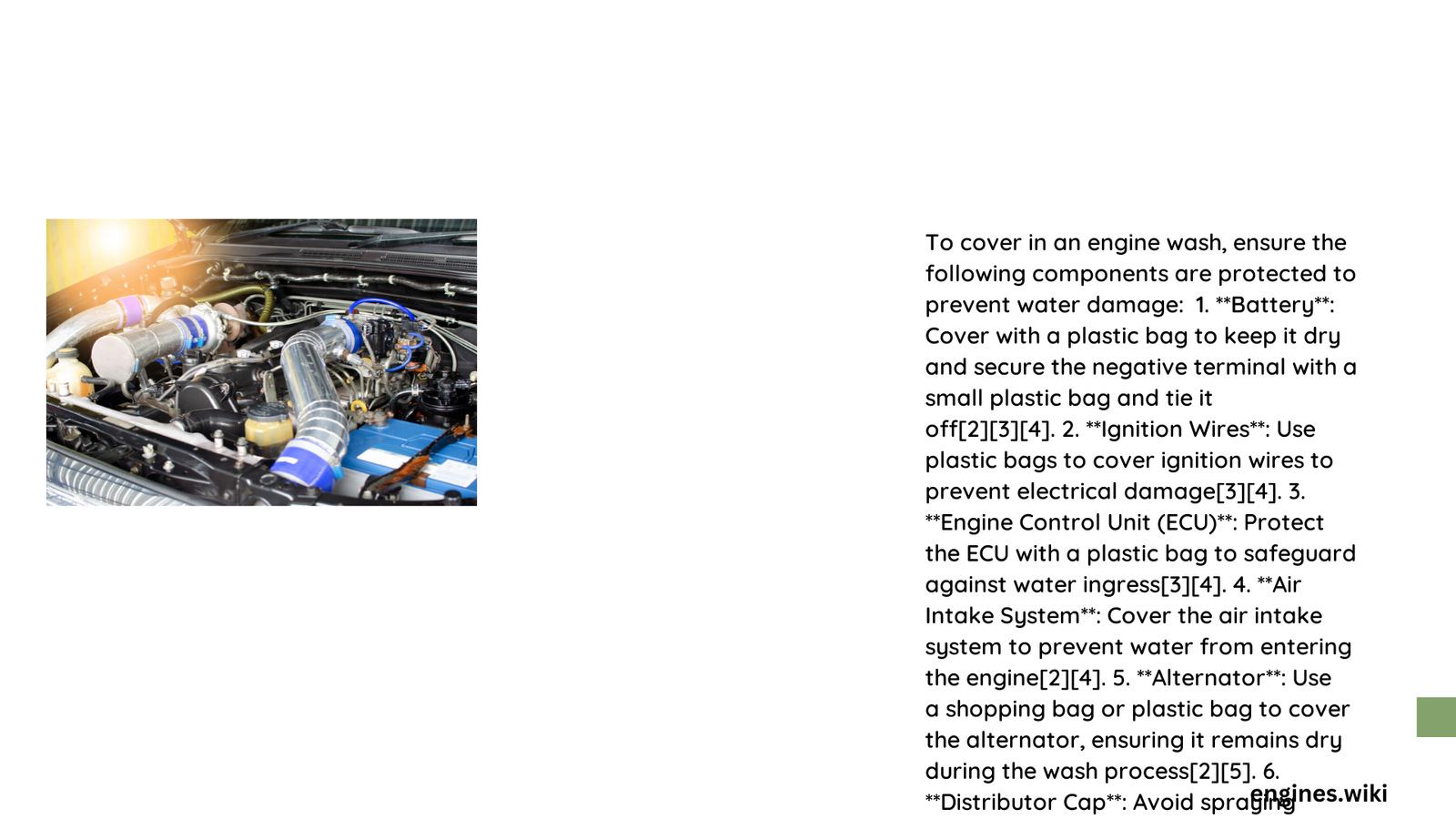Engine washing requires meticulous preparation and strategic component protection to prevent electrical damage and maintain vehicle performance. Proper coverage of sensitive electrical systems, strategic use of protective materials, and careful cleaning techniques are critical to ensuring a safe and effective engine compartment cleaning process that preserves your vehicle’s intricate mechanical systems.
What Components Need Protection During Engine Wash?
Which Electrical Components Require Special Attention?
Vehicle electrical systems are extremely vulnerable during engine washing. Critical components that demand careful protection include:
| Component | Protection Method | Risk if Unprotected |
|---|---|---|
| Car Battery | Plastic bag cover | Electrical short circuit |
| Ignition Wires | Sealed plastic wrap | Potential electrical failure |
| Engine Control Unit (ECU) | Waterproof cover | Complete system malfunction |
| Alternator | Plastic bag protection | Corrosion and electrical damage |
Key Electrical Protection Strategies
- Complete Coverage: Use waterproof plastic bags or specialized electrical component covers
- Avoid Direct Water Spray: Redirect water streams away from sensitive areas
- Use Low-Pressure Techniques: Prevent water penetration into electrical connections
How to Prepare Engine for Washing?
Preparation is crucial for a successful engine wash. Follow these systematic steps:
- Cool Down Engine: Wait 15-20 minutes after driving
- Remove Loose Debris: Use soft brushes or compressed air
- Disconnect Battery: Remove negative terminal for added safety
- Gather Necessary Materials:
- Waterproof plastic bags
- Degreaser
- Microfiber towels
- Soft-bristled brushes
- Compressed air
What Cleaning Products Work Best?
Selecting appropriate cleaning products ensures effective and safe engine washing:
Recommended Degreasers:
– Meguiar’s Super Degreaser
– Simple Green
– SONAX Engine Degreaser
Engine Dressing Products:
– SONAX Plastic Care
– Chemical Guys VRP
Safety Considerations During Engine Wash

What Personal Protective Equipment Is Necessary?
- Chemical-resistant gloves
- Safety glasses
- Protective respiratory mask
- Non-slip work shoes
- Long-sleeved clothing
How to Prevent Water Damage?
- Use low-pressure water settings
- Avoid direct spray on electrical components
- Use shower-style water stream
- Maintain safe distance while rinsing
- Immediately dry exposed areas
Post-Washing Maintenance
What Steps Ensure Proper Drying?
- Use compressed air for hard-to-reach areas
- Wipe with microfiber towels
- Allow natural air circulation
- Run engine briefly to evaporate remaining moisture
Pro Tips for Effective Engine Washing
- Temperature Matters: Choose warm, low-humidity days
- Frequency: Wash every 6-12 months
- Avoid Harsh Chemicals: Use automotive-specific degreasers
- Inspect While Cleaning: Look for potential mechanical issues
Common Mistakes to Avoid
- High-pressure water spraying
- Neglecting electrical component protection
- Using household cleaning products
- Incomplete drying process
Pro Tip: Always consult your vehicle’s manual for specific washing recommendations specific to your make and model.
Final Recommendations
Successful engine washing requires patience, proper technique, and careful attention to detail. By following these comprehensive guidelines, you’ll maintain your vehicle’s engine compartment effectively while preventing potential damage.
Reference:
– Autogeek Online
– Car and Driver
– Auto Detail Doctor
